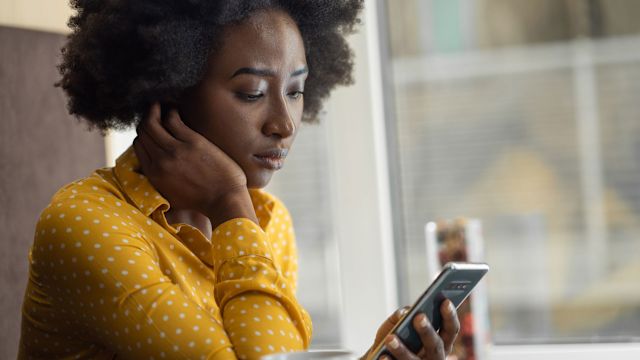Updated on September 23, 2025.
Do you have a desire or need to speak with a mental health provider, but find that cost, distance, or accessibility are stumbling blocks to have an appointment? If so, teletherapy may be right for you.
Teletherapy (also known as telemental health) is the process of meeting with a mental health professional using digital technology. It's a subset of telemedicine, also known as telehealth. Telemedicine allows you to meet with a healthcare provider (HCP) remotely using a computer or mobile device.
During the height of the COVID-19 pandemic—when schools, offices, and businesses closed and people were stuck at home—there was a dramatic rise in the use of teletherapy. The intense stress and anxiety that many people felt created a surge in demand for these services.
But even after the worst of the pandemic, teletherapy remains a useful and viable way to meet with a mental health provider virtually. Here’s what to know about teletherapy, including how to access it, how to set up an appointment, and how to make the most of your time with a mental health provider online.
The rise of teletherapy
Many mental health providers used telehealth in their practices before the pandemic but it surged during the COVID-19 crisis, says Joseph C. Kvedar, MD, former president of the American Telemedicine Association, professor of dermatology at Harvard Medical School, and editor-in-chief of NPJ Digital Medicine.
Mary Alvord, PhD, a psychologist in Maryland, had been conducting telemental health sessions for years before the pandemic hit. She has trained thousands of other therapists on how to use technology in their practices.
During the pandemic, Alvord’s practice went completely virtual as she observed that her patients reported more anxiety, isolation, depression, family conflicts, and OCD (obsessive-compulsive disorder), as well as related financial distress.
Digital technology allowed people with access to Wi-Fi and smartphones, tablets, or computers to “see” mental health professionals virtually and to keep follow up visits without leaving their home.
Is teletherapy really effective?
If you haven’t used teletherapy, you might question whether a virtual session with a mental health professional will provide the same benefits as an in-person, face-to-face appointment.
In some cases, telemental health can be even better, Dr. Kvedar says.
“The ‘physical exam’ in mental health is talking to the patient. So not only can we accomplish everything from an exam perspective that we could in the office, we get more information,” he explains. “We see the person in their environment and so much that goes on in that environment is relevant to their mental health.”
Evidence suggests that telemedicine can help address a number of conditions, especially depression, anxiety, and post-traumatic stress disorder (PTSD). Videoconferencing, smartphone apps, online forums, text messaging, and emails have been shown to be useful ways to deliver mental health services.
One of the clear benefits of telemental health during the pandemic was that technology provided services to people without requiring them to travel to an office and risk exposure to COVID-19. But even before the pandemic, receiving teletherapy helped people avoid having to miss work or school to travel to their appointments. It’s also beneficial for those who need a mental healthcare professional who specializes in a specific problem, such as OCD, but don’t have access to a provider within a reasonable traveling distance of their home.
Possible limitations to consider
Teletherapy isn’t a “one size fits all” solution. Some people simply respond better to virtual care than others.
Those who are already skilled at using technology are typically more open to telemental health sessions than people who aren’t, Alvord points out. It’s often a generational divide—with younger adults feeling more comfortable with it than older people. Alvord says she asks reluctant patients to try teletherapy for “just five minutes” to see if they can become more comfortable with it. She notes that, in her experience, many older people find that it’s better than they thought it would be.
Still, some mental health services can’t be done virtually, including full psychological testing, Alvord says. These tests are done for a variety of reasons.
For example, a child who’s having trouble with schoolwork may be assessed for learning disabilities. A psychological battery taken in person at the psychologist’s office is what’s called “norm-referenced.” That means the test has been standardized so that test-takers are evaluated in exactly the same way regardless of where they live or who conducts the test. Online tests aren’t normed in this way, so there are many variables that can’t be controlled, Alvord explains.
Other types of therapy are harder to do online, but not impossible. Alvord says group therapy for children on the autism spectrum, for instance, needs to be pared down to smaller groups when conducted virtually.
Ensure a smooth virtual visit
Teletherapy visits can be scheduled by calling to request an appointment or downloading the app that your mental healthcare provider uses.
Before your appointment begins, take these steps to ensure a smooth experience.
Troubleshoot tech problems
Make sure you’re connected properly to the internet and that the camera and microphone on the device you plan to use are working well. If there are any issues that you can’t solve, let your provider’s office know before the session.
Provide backup phone numbers
Alvord asks for backup and emergency phone numbers as part of her telehealth agreement, for two reasons:
- Sometimes, technology glitches get in the way of the best-planned telemental health sessions. Screens may freeze or the electricity could go out. A backup phone number allows the session to continue.
- An emergency number is also needed if there’s a mental health crisis or the potential for one. “We’ve had teenagers get mad and slam their laptops shut and then not answer their phone,” Alvord says. Your mental healthcare provider needs to know who to call in situations like that.
Find a private spot
Conduct teletherapy visits in a private room and wear a headset or earbuds, if possible. Make sure your family knows you’re on a private call, so no one barges in.
Avoid distractions
Turn off notifications on your phone and wait until after your session to check emails. As much as you love your pets, keep your four-legged friends outside of the room during your virtual meeting.







